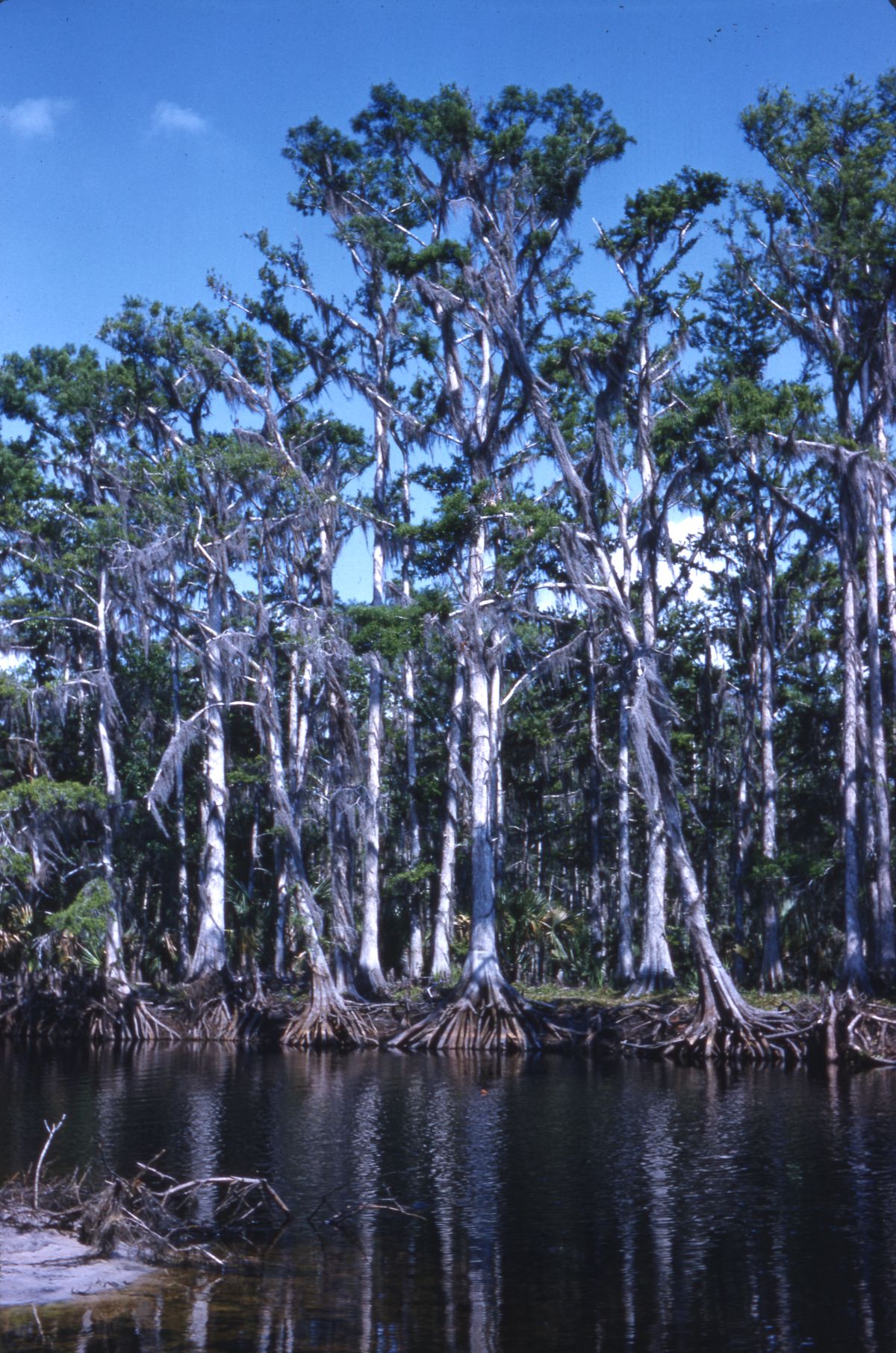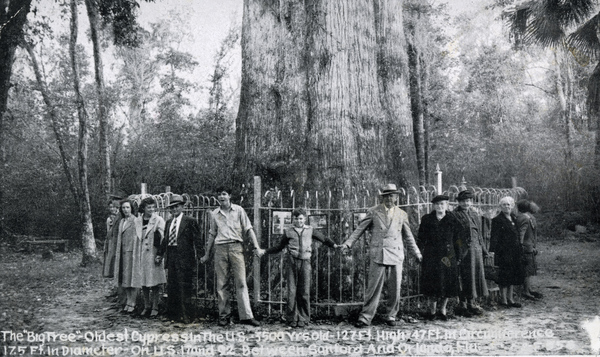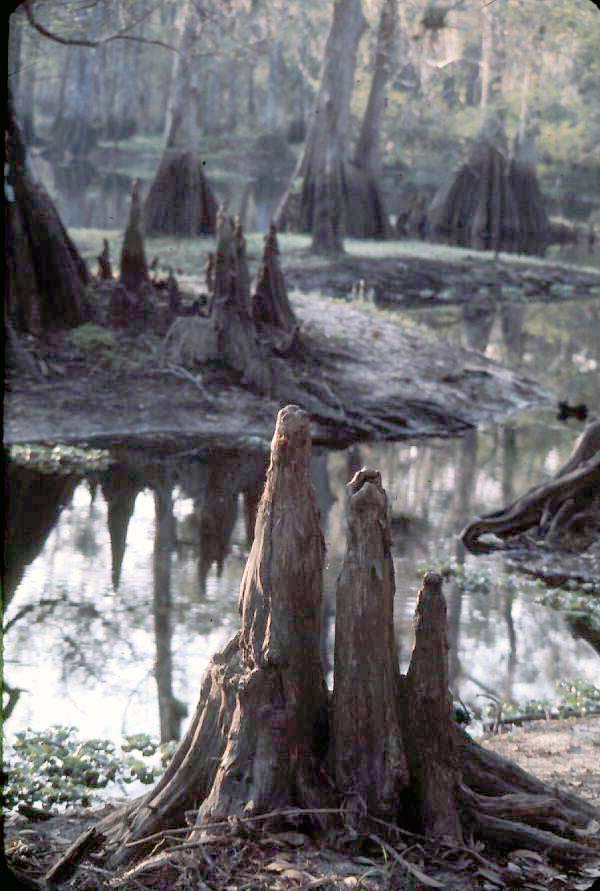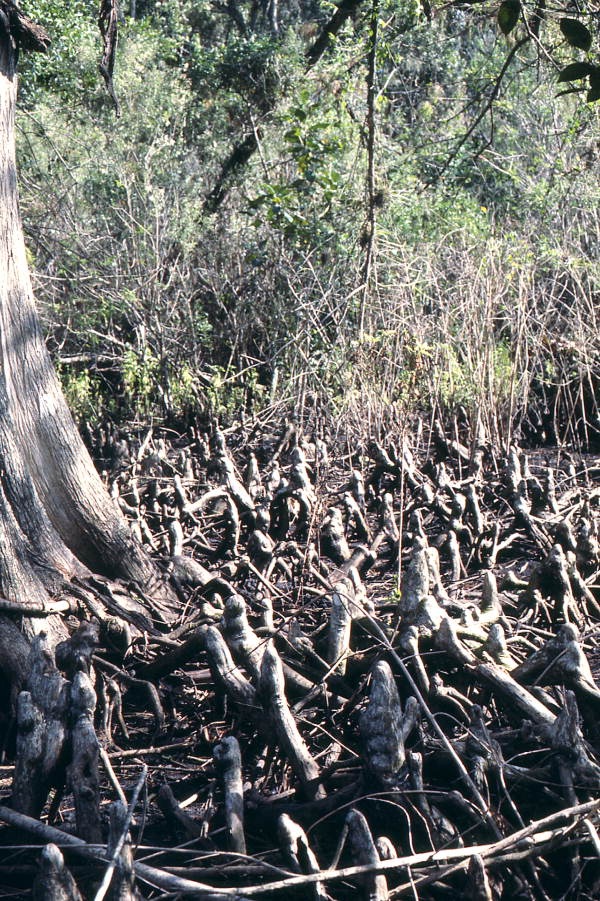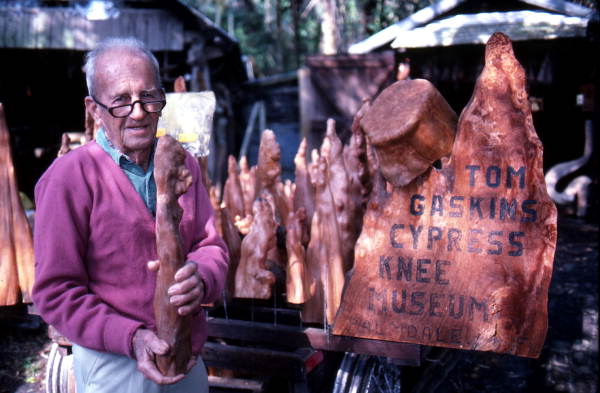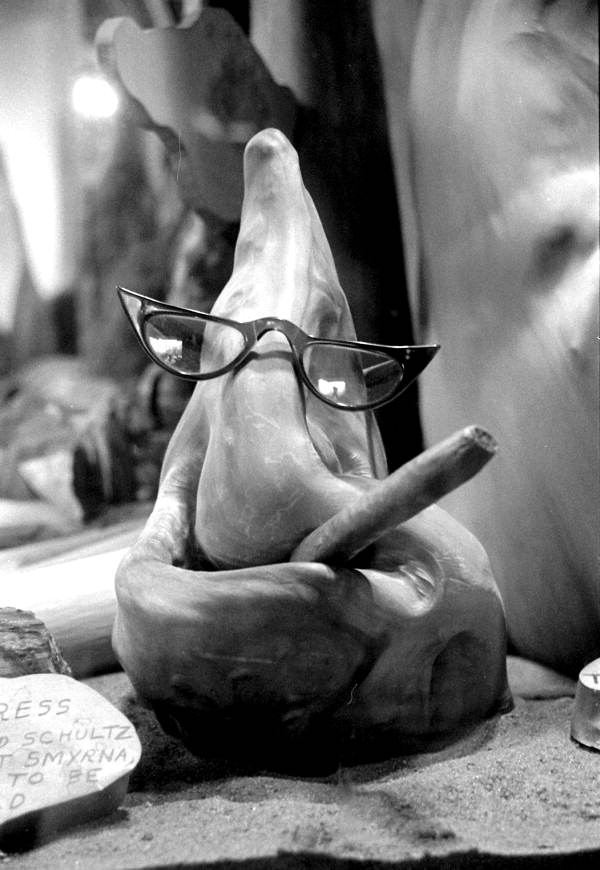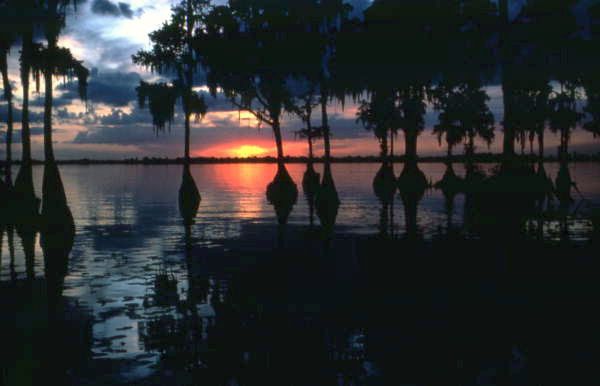Description of previous item
Description of next item
Some Trees Have Knees
Published September 9, 2015 by Florida Memory
If someone asked you to name something that lives for centuries, can grow over a hundred feet tall, and can have dozens of knees, what would you say it was? It might sound like some hideous creature, but most Floridians would know it’s actually the majestic bald cypress.
The bald cypress (Taxodium distichum) is a familiar sight near Florida’s many lakes, rivers, creeks, swamps, and springs. The trees generally take their time to grow, but that’s not really a problem for a cypress. They can live for hundreds of years. The Senator, a bald cypress that grew near Longwood in Seminole County until it was tragically burned in 2012, was estimated to be about 3,500 years old at the time of its death. .
One of the bald cypress’ most unusual characteristics is its “knees.” The knees are conical growths protruding up from the root system that radiates out from the tree’s trunk. They often have a knobby, knee-like appearance at the top. Their function is unknown, although studies suggest they may help the cypress absorb oxygen and remain stable in loose wet soils.
Cypress wood has long been admired for its beautiful grain, durability, and the ease with which it can be shaped and cut for building purposes. In the early 20th century, logging companies bought up vast tracts of land and cut much of the bald cypress growing in Florida swamps. The hearts of these trees, some of which were likely approaching a millenium in age, were sawed into lumber and marketed as “tidewater cypress.” The cypress industry is still in business, although the supply of available trees has dwindled considerably. Many cypress stands are now part of publicly owned protected wetlands.
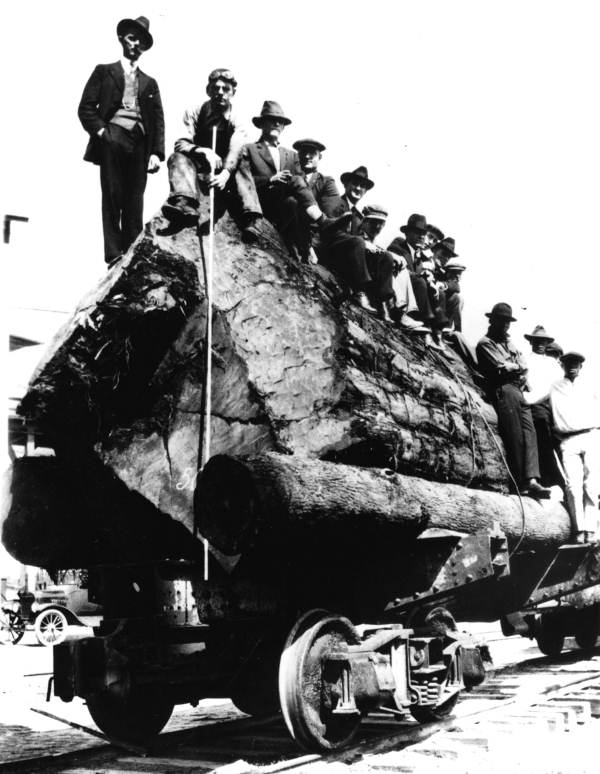
Men sitting on a particularly large cypress log transported by train to the Burton-Swartz Lumber Company mill in Perry (1926).
As for the knees, they too have been a prized commodity. Their distinctive shape, natural broad base, and easy carvability make them perfect for creating figurines, birdhouses, and other small knick-knacks. Tom Gaskins of Palmdale, Florida made a career out of carving and shaping cypress knees for sale. He developed a Cypress Kneeland museum in Palmdale, featuring a collection of carved, peeled, and otherwise altered knees, plus a catwalk zig-zagging through an actual cypress swamp.
Along the path, visitors could see some of Gaskins’ experimental methods for shaping the knees as they grew. At various times, he tried flattening the knees with weights and carving designs into them so that the wooden flesh of the knees would grow around the cuts. Gaskins passed away in 1998, and the Cypress Kneeland Museum closed in 2000.
Cypress trees and their unusual knees are just one of the features that make Florida a unique environment and all the more interesting. Which of Florida’s distinctive characteristics is your favorite? Share this post on social media or leave a comment below and get the conversation started!
Cite This Article
Chicago Manual of Style
(17th Edition)Florida Memory. "Some Trees Have Knees." Floridiana, 2015. https://www.floridamemory.com/items/show/297530.
MLA
(9th Edition)Florida Memory. "Some Trees Have Knees." Floridiana, 2015, https://www.floridamemory.com/items/show/297530. Accessed December 15, 2025.
APA
(7th Edition)Florida Memory. (2015, September 9). Some Trees Have Knees. Floridiana. Retrieved from https://www.floridamemory.com/items/show/297530

 Listen: The Blues Program
Listen: The Blues Program